At some point during his life, your horse quite possibly will experience an injury, illness or surgical procedure that is going to require stall rest. It could be a soft tissue injury to a tendon or ligament, or maybe he had surgery that is going to require some extra quiet time so he can recuperate and heal. Depending on the nature of your horse’s injury, his age and the amount of time needed for recovery, your vet may want to put your horse on stall rest for a period of days, weeks, or even months.
Trying to manage a horse on stall rest can often be challenging, especially if you have a horse that is active and is accustomed to living outside in a pasture or is on a regular daily workout schedule. Horses that are confined to their stalls for long periods of time can quickly become stressed; even the most even tempered horse can become upset to the point that he can develop health issues (gastric ulcers) or behavioral issues (such as pawing, chewing, cribbing or stall kicking). Unlike people, your horse is not able to pass the time by reading magazines, playing crossword puzzles or watching TV! So you’ll need to come up with some creative ways to help keep your horse happy and preoccupied while he’s on stall rest. Here are a few suggestions to help reduce the stress and boredom of stall rest, but make sure you check with your vet first before you try anything new. Remember: your vet will give you full instructions on what you can and cannot do with your horse while he’s on stall rest and you want to make sure that you closely follow his instructions.
Location
The first thing you’ll need to do when you put your horse on stall rest is to pick out the location of the stall that he’ll be staying in. Ideally, the stall should not be so small that your horse could get stuck and injure himself, but you also don’t want it to be too large where he would be able to run and become re-injured. Stalls that are approximately 12×12 or 12×15 typically are adequate size for an average size horse, but see what size stall your vet recommends for your horse’s recovery. You should try to pick a stall that is centrally located in a busy area of the barn, with good natural lighting and good ventilation. If you can, use a stall that is set up in such a way that your horse will have a clear view of all the busy, daily activities so that he does not feel isolated or bored. In most cases, if your horse is able to watch other horses and people in the barn area during the day, this extra entertainment will help keep his mind busy and let him feel like he’s part of the activity. If you keep your horse at a busy boarding facility, you can also ask everyone in the barn to stop by and say hi to your horse during the day so he can have some extra activity and attention, too.
Stall Preparation
Before you move your horse into a stall to begin his stall rest, carefully inspect the stall and look for any sharp edges, loose or splintered boards, or anything inside the stall that your horse could possibly injure himself on. Make sure the floor is smooth and flat, and that there isn’t an area where your horse could get cast or stuck when he’s lying down. Also check the gate latch and make sure it’s secure and in good working condition. You might want to add a second bucket of water for him that he can easily reach, and his feed bin should also be easy for him to access as well. You’ll want to line the stall floor with rubber mats, then cover the mats with plenty of fresh, dust-free shavings. Keeping his stall deeply bedded with at least 10-12 inches of shavings is essential; your horse will rest much more easily if he’s on properly cushioned, soft bedding plus it will make it easier for him to get up and down without slipping. Since your horse is going to be living in his stall for a while, you’ll want to clean his stall several times a day, making sure there is never a buildup of manure, urine or ammonia fumes.
In addition to soft cushioned bedding, you can also add some extra accessories to your horse’s stall to help keep him comfortable. During the hot summer months, you might want to set up some fans and water misters to help keep him cool (plus this will also help repel biting insects and flies). Another amenity that you can provide your horse with while he’s on stall rest is if your barn tends to become quiet during the day, you might try leaving a radio on with soft soothing music. That way he’ll have some background sounds to help keep him company.
Adjusting His Feed
Once you have your horse’s stall set up, the next thing you’ll want to consider is your horse’s feed. Talk to your vet and find out what he recommends for your horse, as you may need to make some adjustments now that he’s on stall rest and his exercise program has changed. You’ll want to feed your horse hay that is fresh and dust free, especially now that your horse is spending most or all of his time in his stall. If possible, try feeding your horse smaller meals more frequently throughout the day which will help keep his mind busy and help reduce some of the boredom. Also, if your horse is permitted to walk around his stall, you can place his hay in small piles around the perimeter of the stall – this way your horse will be preoccupied with taking a few bites, walking a few steps, and then taking a few more bites. You can also try using a hay net (make sure it’s safely placed where he cannot injure himself), or you can also try using a slow feeder or a treat dispenser to help keep your horse busy.
Companionship
Most likely your horse will find comfort by having a stall buddy nearby to help keep him company while he’s on stall rest. If your horse is able to have a clear view of his companion, then there’s a good chance that he’ll start to relax and settle down in his stall. You can try having the same horse in the stall next to your horse for company, or you can also try rotating horses in the empty stall so he has a variety of friends to visit with each day. If you don’t have another horse that you can keep stalled next to your horse, see if you can find a small animal such as a goat, sheep or miniature horse that you can keep in a temporary stall or in an adjacent stall. Depending on your horse’s temperament, you’ll probably want to introduce them slowly, making sure that he and his new neighbor are going to be okay next to each other. You definitely do not want your horse to get too excited or agitated, so keep a close eye on this arrangement and make sure your horse is getting the rest that he needs.
Extra Attention
Now that your horse is on stall rest, this is the perfect opportunity to spend as much extra time as you can with your horse. Most horses love attention, whether it’s grooming, brushing, or scratching those hard to reach places. You can spend your grooming sessions by using a curry comb and different size brushes on his coat and also thoroughly comb out any tangles or knots in his tail and mane. Maybe you’ve always wanted to improve your braiding techniques? This is a great opportunity for you to practice and learn how to make perfect braids and your horse will surely enjoy the company and attention. All this extra grooming and brushing will help your horse with his circulation plus by the time your horse is done with his stall rest, you might find that you have the cleanest, best groomed horse in the barn!
Most horses will tend to get a little stiff when they’re on stall rest, no matter how well conditioned they are. Just like people, the longer a horse is kept from exercise and regular activities, the more likely it is that he can develop aches and pain from not being able to stretch and move. Check with your vet first and if it’s okay, then you can also use this time to help your horse with some of his stiffness by giving him simple massages. You can gently massage his legs by carefully rubbing them up and down and if he’s able to bend his legs, you can also pick up a leg and help him flex and stretch a little bit. Try massaging his neck and back, too, which can also become stiff especially if he’s an older horse. Also, for additional joint, tendon and ligament support, you should give your horse a joint supplement such as InflamAway HA-200.
Toys
Trying to keep your horse preoccupied while he’s on stall rest is important, and providing play toys for your horse is another great way to help break up the boredom. There is a wide selection of toys designed especially for horses, such as hanging treat balls or lick toys that attach to the stall wall – these toys keep your horse busy by moving as he tries to lick or eat the treats. Some horses like to play with scented Jolly Balls, which are made of durable plastic and are easy to clean. Or you can try to keep your horse busy by giving him salt or sweet licks, such as Pony Pops or Himalayan Rock Salt. Some horses enjoy the company of a stuffed toy animal, which you can place in the stall for him to nuzzle and play with. Or you can also try making your own stall toys by hanging an empty plastic milk jug (make sure the top is removed) and place small pebbles inside so it makes some noise when he pushes it around. Another idea for a play toy is you can take a rubber stall guard and get stacking baby rings that you can thread on the stall guard and attach it to the stall wall – your horse will have fun pushing the rings back and forth. You can also slice up some of your horse’s favorite fruits and vegetables and sprinkle them in his hay – this will keep him busy while he’s digging through his hay looking for the tasty treats. Try giving your horse a selection of toys and rotate them throughout the day and you’ll soon see which toys are his favorites and which ones he’s not really interested in. Remember – the more you can keep your horse entertained, the less likely he’ll become bored and develop unwanted behaviors such as cribbing, pawing or stall weaving. Of course, though, safety is a number one priority so make sure that whatever type of toy you select for your horse, he cannot get injured, trapped or stuck in it.
Hand Walking Or Turn Out
Check with your vet to learn what your horse can and cannot do while he is on stall rest. Find out if your horse can come out of his stall to nibble on nearby grass, or if he can go for short walks on a halter and lead line. If your horse is allowed to leave his stall a few times a day, you can take advantage of this time to help break up the boredom of being kept in a stall. Maybe you can hand graze him for 10-15 minutes a few times a day, or perhaps you can take him for short walks around the barn area. Or maybe you can let him out into a small outdoor round pen or small paddock where he can walk around and enjoy the change of scenery. If you can, try to avoid walking through the barn area during feeding time when excitement levels can be high, and when you do take your horse out for a walk, keep him in an area where the ground is level and flat so he doesn’t stumble or injure himself. Your horse may be fresh and excited when you take him out of his stall, so make sure that you put safety first ahead of all else.
Every situation is different, and some horses may need just a few days or weeks, where others may need several months to fully recuperate, so check with your vet first to find out what he recommends for your horse during stall rest. Some horses may initially require prescription drugs to help take the edge off, especially if the horse is unable to relax and adapt to stall rest, while other horses may benefit from an herbal calming formula such as RelaxForm. Once your horse has recuperated and your vet has given you the okay to end the stall rest, it will take some time to transition back to your regular routine. Your horse most likely has lost some muscle tone and probably can’t do as much as he used to. So take your time as you slowly rebuild and return your horse back to work so that you don’t risk re-injury. With time, patience and careful attention, you’ll be able to keep your horse happy, healthy and stress-free during his stall rest and before you know it, you and your horse hopefully will be back to your regular routine.

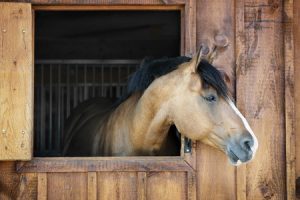
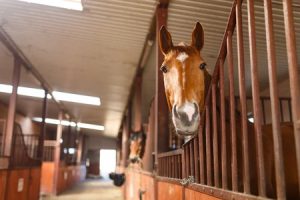
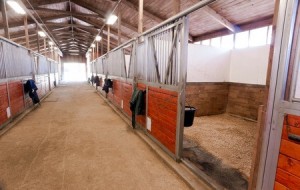
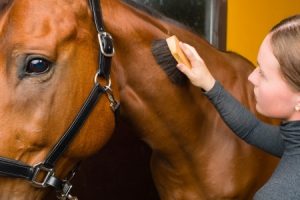
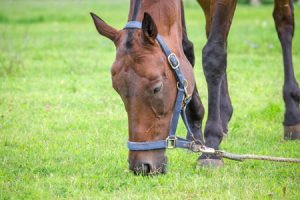




Leave a Reply